This nursing care plan and management guide can assist in providing care for patients with hyperthermia. Get to know the nursing assessment, interventions, goals, and nursing diagnosis to promote safe nursing care for patients with hyperthermia.
Table of Contents
- What is Hyperthermia?
- What are Heat-Related Illnesses?
- Causes of hyperthermia
- Signs and Symptoms of Hyperthermia
- Nursing Diagnosis
- Goals and outcomes
- Nursing Assessment and Rationales
- Nursing Interventions and Rationales
- Recommended Resources
- See also
- References and Sources
What is Hyperthermia?
Hyperthermia is defined as elevated body temperature due to a failure in the body’s thermoregulation system, which arises when a body produces or absorbs more heat than it can dissipate. It is a sustained core temperature beyond the normal range, typically greater than 39°C (102.2°F). Such elevations can range from mild to extreme, with body temperatures above 40°C (104°F) posing life-threatening risks.
What’s the difference between hyperthermia and fever?
Hyperthermia is characterized by an uncontrolled increase in body temperature that exceeds the body’s ability to lose heat with failure in hypothalamic thermoregulation. In contrast, fever (pyrexia) is characterized by a temporary elevation of body temperature above the normal value that is induced by cytokine activation (e.g., immune activation due to infection, inflammatory diseases) and is regulated by the hypothalamus.
See also: Fever (Pyrexia) Nursing Care Plans
Common causes of hyperthermia result from the combined effects of activity and salt and water deprivation in a hot environment, such as when athletes perform in scorching weather or when older adults avoid using air conditioning because of expense. Hyperthermia may transpire more quickly in persons who have endocrine-related problems, alcohol consumption, or take diuretics, anticholinergics, or phototoxic agents. Common forms of accidental hyperthermia include heat stroke, heat exhaustion, and heat cramps. Malignant hyperthermia is a rare reaction to common anesthetic agents such as halothane or the paralytic agent succinylcholine. Those who have this reaction, which is potentially fatal, have a genetic predisposition.
What are Heat-Related Illnesses?
Heat-related illnesses are a spectrum of conditions that occur when the body is unable to cool itself properly in hot weather. These illnesses range from mild to severe and can include heat cramps, heat exhaustion, and heat stroke. They are caused by prolonged exposure to high temperatures, often coupled with dehydration or strenuous physical activity. Certain individuals, such as the elderly, infants and young children, the obese, outdoor workers, and those with chronic medical conditions, are at increased risk for developing a heat-related illness. A thorough assessment of preoperative patients is necessary for prevention.
Heat Stroke
Heat stroke is the most severe form of heat-related illness and is a medical emergency. It occurs when the body’s core temperature rises to 40°C (104°F) or higher due to failure of the body’s heat-regulating mechanisms or the sweating mechanism of the body fails. Symptoms include confusion, seizures, loss of consciousness, and hot, dry skin. If not treated quickly, heat stroke can cause permanent damage to organs or even death.
Heat Exhaustion
Heat exhaustion is a milder form of heat-related illness that happens when the body loses too much water and salt through sweating. It can develop after prolonged exposure to high temperatures or physical activity in hot weather. Symptoms include heavy sweating, weakness, dizziness, nausea, headache, and rapid heartbeat. If untreated, heat exhaustion can progress to heat stroke.
Heat Cramps
Heat cramps are painful, involuntary muscle spasms that usually occur during or after intense physical activity in high temperatures. They are caused by loss of fluids and electrolytes through sweating. Heat cramps typically affect muscles in the abdomen, arms, or legs. Though not as severe as heat stroke or exhaustion, they signal the need to replenish fluids and cool down.
Heat Syncope (Fainting)
Heat syncope occurs when an individual experiences a sudden drop in blood pressure due to prolonged standing or rapid changes in posture during heat exposure. It results in fainting or lightheadedness. This condition is more common in older adults and those unaccustomed to the heat.
Heat Rash (Prickly Heat)
Heat rash is a skin irritation caused by excessive sweating during hot, humid conditions. It appears as red, itchy clusters of small blisters or bumps, usually on the neck, chest, groin, or armpits. Although it is not a serious condition, it can be uncomfortable and is typically managed by staying in a cooler environment and keeping the affected area dry.
Rhabdomyolysis (Exertional Heat Injury)
Rhabdomyolysis is a severe complication of heat-related illness in which muscle tissue breaks down rapidly, releasing harmful proteins into the bloodstream. This condition can occur due to extreme heat and exertion and may lead to kidney damage if untreated.
| Condition | Definition | Key Symptoms | Severity | Treatment |
|---|---|---|---|---|
| Heat Cramps | Muscle spasms caused by loss of fluids and electrolytes | Painful muscle cramps, sweating, fatigue | Mild | Rest, hydration, electrolyte replacement |
| Heat Syncope | Fainting due to reduced blood flow to the brain | Dizziness, lightheadedness, fainting | Mild | Rest, rehydration, cool environment |
| Heat Rash (Prickly Heat) | Skin irritation caused by excessive sweating | Red, itchy skin, small blisters | Mild | Cooling the area, keeping skin dry, wearing light clothing |
| Heat Exhaustion | Result of prolonged heat exposure and dehydration | Heavy sweating, weakness, dizziness, nausea, headache | Moderate | Move to a cooler place, hydrate, apply cool compresses |
| Heat Stroke | Life-threatening failure of heat-regulation mechanisms | High body temperature (>40°C/104°F), confusion, seizures, coma | Severe | Immediate cooling, IV fluids, emergency medical care |
| Hyperthermia | Elevated body temperature due to external heat without hypothalamic control | Hot, dry skin, increased heart rate, confusion, seizures | Can range from mild to life-threatening | Cooling measures, IV fluids, remove from heat exposure |
| Rhabdomyolysis | Severe muscle breakdown due to extreme heat and exertion | Muscle pain, weakness, dark urine, reduced urine output | Severe, can lead to kidney failure | IV fluids, electrolyte balance, monitoring for kidney damage |
Causes of hyperthermia
Here are some factors that may be related to hyperthermia:
- Excessive heat exposure. A common cause of hyperthermia, this occurs when an individual is exposed in hot weather, being in a hot environment.
- Dehydration. Decrease in fluid volume or hypovolemia can cause decrease in perspiration and inability of the body to cool itself down.
- Certain medications. Some medications, such as diuretics and anticholinergics, can interfere with the body’s ability to cool itself down and increase risk for hyperthermia.
- Medical conditions. Certain medical conditions, such as heart disease, kidney disease, and obesity can make an individual more susceptible to hyperthermia.
- Malignant hyperthermia. This is a rare but serious condition that can occur during surgery or anesthesia.
Signs and Symptoms of Hyperthermia
Fever and hyperthermia is characterized by the following signs and symptoms:
- Body temperature above the normal range. Hyperthermia occurs when the body temperature rises above the normal range (usually above 37.5°C or 99.5°F) due to disrupted heat regulation mechanisms from factors like high temperatures or strenuous activity.
- Hot, flushed skin. Hyperthermia leads to dilation of blood vessels near the skin’s surface, resulting in increased blood flow and heat dissipation. This dilation causes the skin to feel hot to the touch and appear flushed or red.
- Increased heart rate. The body responds to hyperthermia by increasing heart rate to help distribute heat throughout the body and promote heat loss through perspiration. The increased heart rate is an adaptive response to maintain adequate circulation and cool the body.
- Increased respiratory rate. Hyperthermia triggers an increased respiratory rate as the body attempts to remove excess heat through increased evaporation from the respiratory passages. The increased respiratory rate aids in heat loss through exhalation and assists in maintaining the body’s acid-base balance.
- Loss of appetite. Hyperthermia can result in a loss of appetite due to the body’s focus on thermoregulation. The increased metabolic demands and heat stress may suppress hunger signals, leading to reduced food intake.
- Malaise or weakness. Hyperthermia can cause feelings of malaise or weakness due to the strain placed on the body’s systems in maintaining normal body temperature. The increased energy expenditure, fluid loss, and overall stress on the body can lead to a general sense of discomfort and fatigue.
- Seizures. In severe cases, hyperthermia can lead to seizures. When body temperature rises excessively, it can disrupt normal neurological function, leading to abnormal electrical activity in the brain. Seizures may occur as a result of this neurological disturbance and require immediate intervention.
Nursing Diagnosis
Following a thorough assessment, a nursing diagnosis is formulated to specifically address the challenges associated with hyperthermia based on the nurse’s clinical judgement and understanding of the patient’s unique health condition. While nursing diagnoses serve as a framework for organizing care, their usefulness may vary in different clinical situations. In real-life clinical settings, it is important to note that the use of specific nursing diagnostic labels may not be as prominent or commonly utilized as other components of the care plan. It is ultimately the nurse’s clinical expertise and judgment that shape the care plan to meet the unique needs of each patient, prioritizing their health concerns and priorities.
- Hyperthermia related to prolonged exposure to high temperatures as evidenced by core body temperature of 39.5°C, hot and flushed skin, and increased heart rate.
- Impaired Comfort related to excessive heat exposure as evidenced by complaints of feeling overheated, sweating, and irritability.
- Deficient Fluid Volume related to increased perspiration and inadequate fluid intake as evidenced by dry mucous membranes, decreased urine output, and weak pulse.
- Risk for Impaired Skin Integrity as evidenced by persistent sweating and skin warmth to touch.
- Activity Intolerance related to excessive heat exposure as evidenced by reports of fatigue, weakness, and rapid heart rate after minimal activity.
- Ineffective Thermoregulation related to exposure to extreme heat as evidenced by body temperature of 40°C, confusion, and lethargy.
- Acute Confusion related to elevated core body temperature as evidenced by disorientation, slurred speech, and difficulty following directions.
- Risk for Injury as evidenced by altered level of consciousness and unsteady gait due to elevated body temperature.
Goals and outcomes
The following are the common goals and expected outcomes for hyperthermia:
- Patient maintains body temperature below 39° C (102.2° F).
- Patient maintains blood pressure and heart rate within normal limits.
Nursing Assessment and Rationales
Nursing assessment is vital for patients with hyperthermia as it helps determine the severity, underlying cause, and appropriate interventions. Through monitoring vital signs and assessing symptoms, nurses can develop individualized care plans to manage temperature, hydration, and overall well-being. Continuous assessment enables monitoring of treatment effectiveness and timely adjustments for optimal outcomes.
Assess for signs of hyperthermia.
Assess for hyperthermia signs and symptoms, including flushed face, weakness, rash, respiratory distress, tachycardia, malaise, headache, and irritability. Monitor for reports of sweating, hot and dry skin, or being too warm.
Assess for signs of dehydration as a result of hyperthermia.
Look for signs of dehydration, including thirst, furrowed tongue, dry lips, dry oral membranes, poor skin turgor, decreased urine output, increased concentration of urine, and weak, fast pulse.
Monitor the patient’s heart rate and blood pressure.
HR and BP increase as hyperthermia progresses.
Monitor neurological status and level of consciousness
Continuously assess the patient’s neurological status, including level of consciousness, pupil response, and motor function. Heat stroke can cause central nervous system dysfunction, including confusion, seizures, or coma. Monitoring neurological signs helps identify any deterioration or improvement and ensures timely intervention, such as intubation or sedation if necessary.
Identify the triggering factors for hyperthermia and review the client’s history, diagnosis, or procedures.
Understanding the changes in temperature or the cause of hyperthermia will help guide the treatment and nursing interventions.
Determine age and weight.
Extremes of age or weight increase the risk of the inability to control body temperature. The elderly are prone to hyperthermia because of the physiologic changes related to aging, the presence of chronic diseases, and the use of polypharmacy (Saltzberg, 2013; Brody, 1994)
Accurately measure and document the client’s temperature every hour or as frequently as indicated, or when there is a change in the client’s condition.
Using a consistent temperature measurement method, site, and device will help make accurate treatment decisions and assess trends in temperature. Use two modes of temperature monitoring if necessary. All non-invasive methods to measure body temperature have accuracy and precision variances unique to each type and method compared to core temperature methods. Note that the difference in temperatures between core temperature measurement and other non-invasive methods is considered to be 0.5ºC (Barnason et al., 2012; Sessler et al., 1991; Tayafeh et al., 1998).
Monitor fluid intake and urine output. If the patient is unconscious, central venous or pulmonary artery pressure should be measured to monitor fluid status.
Fluid resuscitation may be required to correct dehydration. The significantly dehydrated patient is no longer able to sweat, which is necessary for evaporative cooling.
Nursing Interventions and Rationales
Nursing interventions for hyperthermia include measures to reduce body temperature such as cooling techniques (e.g., applying cool compresses, using fans), encouraging adequate fluid intake, and monitoring vital signs to assess response to interventions and prevent complications. The following are the therapeutic nursing interventions for hyperthermia:
General interventions for hyperthermia
Recognize the signs and symptoms of heat exhaustion or heat-related illness.
Heat-related illness occurs when the body’s thermoregulatory system fails. Heat exhaustion is characterized by elevated body core temperature (37ºC to 39.4ºC) associated with orthostatic hypotension, tachycardia, diaphoresis, tachypnea, weakness, syncope, muscle aches, headache, and flushed skin. Exertional hyperthermia, often affecting athletes, can precipitate heat exhaustion. But it can also occur during warm weather or locations with extreme temperatures.
Recognize the signs and symptoms of heatstroke.
Heatstroke occurs when the body’s thermoregulation fails and is defined as elevated core body temperature (above 39.4ºC) and central nervous system involvement. Symptoms include delirium, lethargy, red, hot, dry skin, decreased LOC, seizures, coma. Heatstroke is an emergency and, if not treated promptly, can result in death.
Loosen or remove excess clothing and covers and apply ice packs.
Exposing skin to room air decreases heat and increases evaporative cooling. Removing clothing and applying cool compresses to areas like the neck, armpits, and groin promotes heat dissipation through conduction and evaporation, helping to lower the core body temperature. Surface cooling by placing ice packs in the groin area, axillae, neck, and torso is an effective way of cooling the core temperature. When the patient’s core temperature is lowered to 39ºC, it is necessary to remove the ice packs from the patient to avoid overcooling which can result in hypothermia. (O’Connor, 2017).
Place ice packs on areas with high vascularity such as the groin, axillae, neck, and torso, while ensuring that ice packs are covered with a towel or sheet to protect the skin.
These areas are rich in blood vessels, so applying ice packs effectively reduces core temperature by cooling the blood as it circulates. Covering ice packs with a barrier protects the skin from frostbite or damage caused by prolonged exposure to ice.
Sponge the patient with cold water or spray the patient using a spray bottle while placing a fan to blow air directly on the patient.
Evaporative cooling is an effective way to reduce core body temperature by increasing heat loss from the skin. The combination of cold water and air circulation accelerates the evaporation process, enhancing cooling.
Submerge a sheet in cold water, wring it out, and wrap it around the patient. Replace or re-submerge the sheet when it loses its cooling effect.
Wrapping the patient in a cold, damp sheet helps lower body temperature through conduction. The frequent re-application ensures continuous cooling, helping prevent heat-related damage.
Provide hypothermia blankets or cooling blankets when necessary.
Use cooling blankets that circulate water when the body temperature is needed to be cooled quickly. Set the temperature regulator to 1ºC below the client’s current temperature to prevent shivering.
Continuously monitor the patient for shivering during the cooling process.
Shivering increases heat production and counteracts cooling efforts. Managing shivering is important to ensure that cooling remains effective and to prevent an increase in core temperature due to the body’s reflexive response.
Infuse intravenous cooled saline as ordered.
Cooled saline is an effective way to decrease core temperature. Cold saline is usually infused over 10-20 minutes. In a study, 18cc/kg of cold saline infusion decreased core temperature by ~1.0ºC in children with acute brain injury who were treated for fever (Fink et al., 2012). Sedation is usually induced during infusion to facilitate effective temperature reduction by preventing shivering.
Infuse cold saline intravenously or irrigate the bladder with cold saline if the patient has a Foley catheter, while monitoring closely for shivering or overcooling, as ordered.
Cold saline infusion directly lowers core body temperature by cooling the blood and tissues from within. This method helps achieve rapid temperature reduction, but close monitoring is essential to avoid shivering and overcooling, which can lead to complications like hypothermia.
Regularly check the patient’s vital signs, including heart rate, blood pressure, and temperature, using a rectal or esophageal probe for core temperature monitoring.
Continuous monitoring of vital signs ensures that the patient is responding appropriately to cooling interventions. Monitoring core temperature helps prevent overcooling, which can lead to hypothermia and its associated complications like arrhythmias and coagulopathies.
Stop or adjust cooling interventions once the patient’s core body temperature reaches 38-39°C.
Continuing cooling beyond this range may result in hypothermia, which poses risks such as arrhythmias and bleeding disorders. Cooling should be ceased or tapered to maintain a safe body temperature.
Frequently assess the skin for signs of frostbite or ice damage, particularly in areas where ice packs are applied, and regularly adjust the site of ice pack application.
Prolonged exposure to ice can cause tissue damage, including frostbite. Moving the ice packs and using protective barriers like towels reduce the risk of skin injury while maintaining effective cooling.
Monitor the skin during the cooling process.
Prolonged exposure to ice can damage the skin. Cover ice packs with a towel and regularly adjust the site of application to mitigate skin damage.
Ice water immersion.
Ice water immersion is the most efficient noninvasive technique for lowering core body temperature. This cooling technique can lower body temperature at about 0.15ºC to 0.35ºC per minute (O’Connor, 2017).
Assist in performing gastric lavage.
Gastric lavage is an invasive cooling technique that can achieve a reduction of about 0.15ºC per minute. Note that gastric lavage may not be suitable for all patients as there is a risk that the infused cold saline may not be retrieved completely and can lead to water intoxication leading to further damage.
Assist in performing peritoneal lavage.
Peritoneal lavage is an invasive cooling technique resulting in core temperature reductions of up to 0.08ºC to 0.16ºC per minute. It is a highly effective technique due to the large surface area of the peritoneum.
Adjust and monitor environmental factors like room temperature and bed linens as indicated.
Room temperature may be accustomed to near normal body temperature, and blankets and linens may be adjusted as indicated to regulate the patient’s temperature.
Modify cooling measures based on the patient’s physical response. Monitor the patient for shivering.
Excessive cooling or cooling too rapidly may cause shivering, which increases metabolic rate and temperature. Shivering should be avoided as it will hinder cooling efforts.
Raise the side rails and lower the bed at all times.
Helps ensure the patient’s safety even without the presence of seizure activity.
Administer diazepam (Valium) or chlorpromazine (Thorazine) as indicated.
Helps prevent excessive shivering that increases heat production, oxygen consumption, and cardiorespiratory effort. In a study, rapid IV infusion of cold normal saline with 20 mg of intravenous diazepam results in a 0.2ºC to 1.5ºC decrease in core temperature without increasing oxygen consumption during cold saline infusion (Hostler et al., 2009). Administration of diazepam may reduce the shivering threshold without compromising respiratory or cardiovascular function.
Administer antipyretics cautiously (only if infection is suspected)
Antipyretics like acetaminophen are ineffective in heat stroke, as they work on hypothalamic regulation of fever. They should only be used if fever due to infection is also suspected.
Provide mouth care.
Application of water-soluble lip balm can help with dryness and cracks caused by dehydration.
Keep clothing and bed linens dry.
Promotes comfort and helps prevent chilling since diaphoresis occurs during defervescence.
Encourage adequate fluid intake.
If the client is alert enough to swallow, provide cool liquids to help lower the body temperature. Additionally, if the patient is dehydrated or diaphoretic, fluid loss contributes to fever.
Start intravenous normal saline solutions or as indicated.
Intravenous normal saline solution replenishes fluid losses during shivering chills.
Understand that administering antipyretic medications have little use in treating hyperthermia.
Antipyretic medications (e.g., acetaminophen, aspirin, and NSAIDs) have no role in treating heat-related illness or heat stroke. Antipyretics interrupt the change in the hypothalamic set point caused by pyrogens and are not expected to work on a healthy hypothalamus that has been overloaded.
Interventions for heat stroke
Assess and monitor core body temperature.
Monitoring core body temperature using a rectal or esophageal probe is essential in patients with heat stroke, as rapid fluctuations can occur when evaporative cooling becomes ineffective, especially in humid environments. Ensuring an understanding of environmental factors (e.g., humidity above 75%) will aid in assessing the risk for ineffective cooling mechanisms like radiation, conduction, and convection.
Monitor for signs of dehydration and electrolyte imbalances. Heat stroke patients are at high risk for dehydration, which may cause electrolyte abnormalities such as hypernatremia, hyponatremia, or hyperkalemia. Early detection of symptoms like dry mucous membranes, confusion, and muscle weakness is important for managing fluid and electrolyte levels.
Assess neurological status for signs of brain edema or hemorrhage.
Inadequate hydration can lead to severe electrolyte imbalances, potentially causing brain edema, hemorrhage, and permanent brain damage. Early assessment of altered mental status, headache, and seizures will allow for timely intervention.
Continuously monitor the patient’s airway, breathing, and circulation. Administer oxygen therapy as needed and be prepared for advanced airway management, including intubation, if the patient’s condition deteriorates.
Maintaining airway patency, effective breathing, and adequate circulation is the priority in managing any life-threatening condition. Although intubation is rarely needed for heat stroke patients, monitoring ABCs ensures the patient’s basic physiological functions are supported during rapid cooling and treatment.
Apply cooling techniques such as ice packs to the groin and axillae, evaporative cooling using fans and cool saline on the skin, or if feasible, use ice bath immersion. Continuously monitor the patient’s core temperature using a rectal or esophageal probe.
Rapid cooling is essential to reduce the patient’s core temperature and prevent further organ damage. Cooling measures should be stopped once the patient’s temperature reaches 38 to 39°C to avoid overcooling, which can cause hypothermia. Continuous monitoring ensures that cooling measures are applied appropriately and safely.
Administer IV fluids, such as normal saline or lactated Ringer’s solution, as ordered.
This helps to rehydrate the patient while closely monitoring electrolyte levels and sodium balance. Heat stroke often leads to dehydration and electrolyte imbalances due to excessive fluid loss. IV fluids help restore circulating volume and support organ perfusion without over-correcting sodium levels, which could lead to neurological complications such as cerebral edema.
Administer benzodiazepines as needed to manage shivering and agitation if they occur during cooling measures, while carefully monitoring the patient’s response.
Shivering can increase metabolic heat production, counteracting cooling efforts. Benzodiazepines can blunt the shivering reflex, which may be beneficial in certain patients. However, its use should be individualized as it is not universally recommended.
Assess for signs of end-organ damage by monitoring urine output, liver and kidney function tests, and neurological status.
Heat stroke can cause damage to multiple organ systems, including the kidneys (acute kidney injury), liver (liver failure), and brain (neurological dysfunction). Early detection of complications allows for prompt intervention and supportive care.
Evaluate cardiovascular function and for electrolyte imbalances (e.g., hyperkalemia or hypocalcemia).
Potassium shifts from muscle breakdown (rhabdomyolysis) or acidosis in heat stroke can cause hyperkalemia, which affects cardiac stability. Monitoring ECG for changes like QT interval prolongation, ST-segment abnormalities, and arrhythmias is essential in preventing fatal cardiac events.
Interventions for malignant hyperthermia
The nurse should have the appropriate medication and equipment available, and be knowledgeable about the protocol to follow during malignant hyperthermia.
Perform a thorough history and physical exam to determine if the patient is at risk for malignant hyperthermia.
Trauma, heatstroke, myopathies, emotional stress, strenuous exercise exertion, and neuroleptic malignant syndrome can trigger malignant hyperthermia. Persons who are at risk for malignant hyperthermia include those with a history of muscle cramps or muscle weakness, unexplained temperature elevation, and bulky muscles. Referral to the Malignant Hyperthermia Association of the United States (MHAUS) may be necessary if the patient is at risk for MH. MHAUS can provide information and additional resources for patients with a history of MH.
Recognize the signs and symptoms of malignant hyperthermia, initiate treatment as ordered.
Hyperthermia, tachypnea, unexplained rise in end-tidal carbon dioxide that does not respond to ventilation, tachypnea, and sustained skeletal muscle contractions are the manifestations common to persons who suffer from malignant hyperthermia. Mortality from malignant hyperthermia can be as high as 70%, however, prompt recognition of symptoms and rapid treatment can decrease mortality to 10% (Isaak & Stiegler, 2016). Note that MH can develop during an operation or 24 hours after the operation, thus close monitoring of symptoms is necessary.
Administer 100% oxygen with a non-rebreather mask.
Hyperventilation with 100% oxygen will help lower end-tidal carbon dioxide and flush out volatile anesthetics. If available, insert activated charcoal filters into the inspiratory and expiratory limbs of the breathing circuit. The filter may become saturated after one hour; therefore, a replacement set of filters should be substituted after each hour of use (Malignant Hyperthermia Association of the United States).
Administer dantrolene IV bolus as ordered.
Dantrolene sodium is administered to inhibit muscular pathology and prevent death. It is the only drug effective in the treatment of MH by inhibiting the release of calcium ions from the sarcoplasmic reticulum thereby interfering with muscle contraction (Schneiderbanger et al., 2014). Continuous administration of dantrolene is necessary until the patient responds with a decrease in ETCO2, decreased muscle rigidity, and decreased heart rate.
Place ice packs in the groin area, axillary regions, and sides of the neck.
The application of ice packs is a necessary measure to decrease core body temperature.
Place urinary catheter.
To monitor urine output per hour and color.
Assist in performing iced lavage.
Lavage of the stomach and rectum with cold fluids will dramatically lower body temperature. It is necessary not to lavage the bladder since the fluids can alter the results of urine monitoring.
Avoid hypothermia.
Cooling of the patient should be discontinued when the core body temperature reaches 38ºC or below.
Administer diuretics (e.g., mannitol, furosemide) as ordered.
During malignant hyperthermia, muscle cells are destroyed and the myoglobin that is released accumulates in the kidneys, obstructing urine flow (myoglobinuria). Diuretics promote and maintain urinary flow and prevent renal damage.
Discuss the significance of informing future health care providers of MH risk. Recommend a medical alert bracelet or similar identification.
If the patient is identified to be at risk for MH, alternative anesthetic drugs or methods can be used.
The complete protocol in managing a malignant hyperthermia crisis can be found here.
Patient teaching and home care interventions
Some interventions above can be adapted for home care use. Providing health teachings to the patient and family aids in coping with disease conditions and could help prevent further complications of hyperthermia.
Preventive Measures
- Clothing. Wear lightweight, loose-fitting clothes to allow better airflow and heat dissipation.
- Hydration. Stay well-hydrated by drinking plenty of water, especially during outdoor activities or high temperatures.
- Cooling devices. Use fans or air conditioning to maintain a comfortable, safe indoor temperature.
- Limit outdoor exposure. Minimize time spent outdoors during the hottest parts of the day, typically between 10 a.m. and 4 p.m.
- Physical activity. Limit strenuous physical activity in hot weather to prevent overheating.
- Cooling strategies. Take frequent cool baths or showers to help regulate body temperature.
Monitoring and Early Detection
- Thermometer use. Ensure the patient and family have a functioning thermometer at home and know how to use it to monitor body temperature.
- Recognizing symptoms. Educate the patient and family members about the signs and symptoms of hyperthermia, such as excessive sweating, rapid heartbeat, dizziness, and muscle cramps.
- Early intervention. Teach patients to recognize the early signs of heat-related illness to prevent severe complications.
Emergency Treatment for Hyperthermia
- Immediate cooling. If symptoms of hyperthermia occur, move the person to a shady or cool area immediately.
- Cooling techniques. Apply cooling measures such as sponging with cool water, placing the person in a tub of cool water, or using cool compresses.
- Monitor symptoms. Advise patients to monitor for hyperthermia symptoms, especially during high outdoor temperatures.
Other Precautions
- Outdoor precautions. When going outside, wear a hat and minimize sun exposure to reduce the risk of overheating.
- Elderly care. Stress the importance of monitoring persistent elevated temperature in the elderly, as they may not exhibit typical fever symptoms even when ill.
- Persistent symptoms. Encourage patients to report any persistent elevated temperature or signs of hyperthermia to a healthcare provider, particularly in high-risk individuals such as the elderly.
Recommended Resources
Recommended nursing diagnosis and nursing care plan books and resources.
Disclosure: Included below are affiliate links from Amazon at no additional cost from you. We may earn a small commission from your purchase. For more information, check out our privacy policy.
Ackley and Ladwig’s Nursing Diagnosis Handbook: An Evidence-Based Guide to Planning Care
We love this book because of its evidence-based approach to nursing interventions. This care plan handbook uses an easy, three-step system to guide you through client assessment, nursing diagnosis, and care planning. Includes step-by-step instructions showing how to implement care and evaluate outcomes, and help you build skills in diagnostic reasoning and critical thinking.

Nursing Care Plans – Nursing Diagnosis & Intervention (10th Edition)
Includes over two hundred care plans that reflect the most recent evidence-based guidelines. New to this edition are ICNP diagnoses, care plans on LGBTQ health issues, and on electrolytes and acid-base balance.

Nurse’s Pocket Guide: Diagnoses, Prioritized Interventions, and Rationales
Quick-reference tool includes all you need to identify the correct diagnoses for efficient patient care planning. The sixteenth edition includes the most recent nursing diagnoses and interventions and an alphabetized listing of nursing diagnoses covering more than 400 disorders.

Nursing Diagnosis Manual: Planning, Individualizing, and Documenting Client Care
Identify interventions to plan, individualize, and document care for more than 800 diseases and disorders. Only in the Nursing Diagnosis Manual will you find for each diagnosis subjectively and objectively – sample clinical applications, prioritized action/interventions with rationales – a documentation section, and much more!

All-in-One Nursing Care Planning Resource – E-Book: Medical-Surgical, Pediatric, Maternity, and Psychiatric-Mental Health
Includes over 100 care plans for medical-surgical, maternity/OB, pediatrics, and psychiatric and mental health. Interprofessional “patient problems” focus familiarizes you with how to speak to patients.

See also
Other recommended site resources for this nursing care plan:
- Nursing Care Plans (NCP): Ultimate Guide and Database MUST READ!
Over 150+ nursing care plans for different diseases and conditions. Includes our easy-to-follow guide on how to create nursing care plans from scratch. - Nursing Diagnosis Guide and List: All You Need to Know to Master Diagnosing
Our comprehensive guide on how to create and write diagnostic labels. Includes detailed nursing care plan guides for common nursing diagnostic labels.
References and Sources
References and sources used for this nursing diagnosis guide for hyperthermia.
- Barnason, S., Williams, J., Proehl, J., Brim, C., Crowley, M., Leviner, S., … & Papa, A. (2012). Emergency nursing resource: non-invasive temperature measurement in the emergency department. Journal of Emergency Nursing, 38(6), 523-530.
- Brody, G. M. (1994). Hyperthermia and hypothermia in the elderly. Clinics in geriatric medicine, 10(1), 213-229.
- Fink, E. L., Kochanek, P. M., Clark, R. S., & Bell, M. J. (2012). Fever control and application of hypothermia using intravenous cold saline. Pediatric critical care medicine: a journal of the Society of Critical Care Medicine and the World Federation of Pediatric Intensive and Critical Care Societies, 13(1), 80.
- Hostler, D., Northington, W. E., & Callaway, C. W. (2009). High-dose diazepam facilitates core cooling during cold saline infusion in healthy volunteers. Applied Physiology, Nutrition, and Metabolism, 34(4), 582–586. doi:10.1139/h09-011
- Isaak, R. S., & Stiegler, M. P. (2016). Review of crisis resource management (CRM) principles in the setting of intraoperative malignant hyperthermia. Journal of anesthesia, 30(2), 298-306.
- Isaak, R. S. (2016). Malignant hyperthermia: case report. Reactions, 1599, 130-30.
- O’Connor, J. P. (2017). Simple and effective method to lower body core temperatures of hyperthermic patients. The American journal of emergency medicine, 35(6), 881-884.
- Reifel Saltzberg, J. M. (2013). Fever and Signs of Shock. Emergency Medicine Clinics of North America, 31(4), 907–926. doi:10.1016/j.emc.2013.07.009
- Schneiderbanger, D., Johannsen, S., Roewer, N., & Schuster, F. (2014). Management of malignant hyperthermia: diagnosis and treatment. Therapeutics and clinical risk management, 10, 355.
- Sessler, D. I., Lee, K. A., & McGuire, J. (1991). Isoflurane anesthesia and circadian temperature cycles in humans. Anesthesiology, 75(6), 985-989.
- Tayefeh, F., Plattner, O., Sessler, D. I., Ikeda, T., & Marder, D. (1998). Circadian changes in the sweating to-vasoconstriction interthreshold range. Pflügers Archiv: European Journal of Physiology, 435(3), Emergency Nurses Association

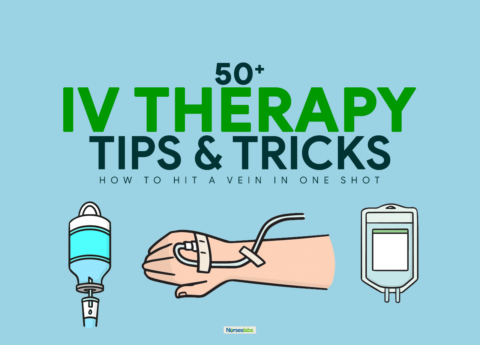



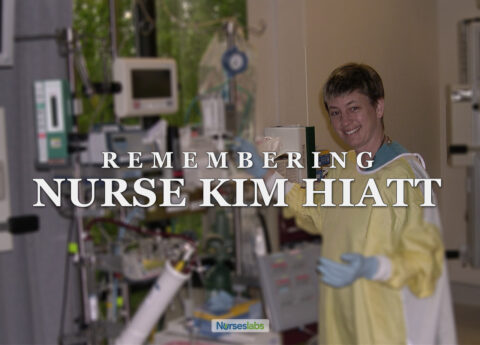












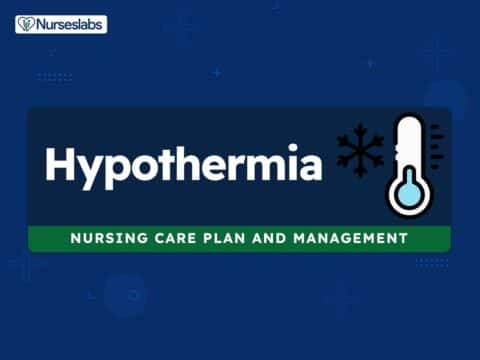
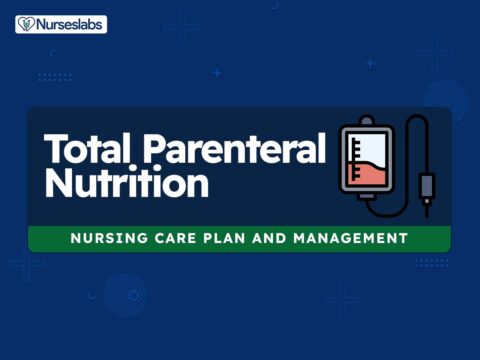
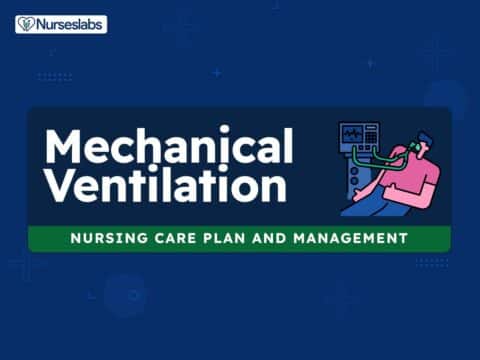




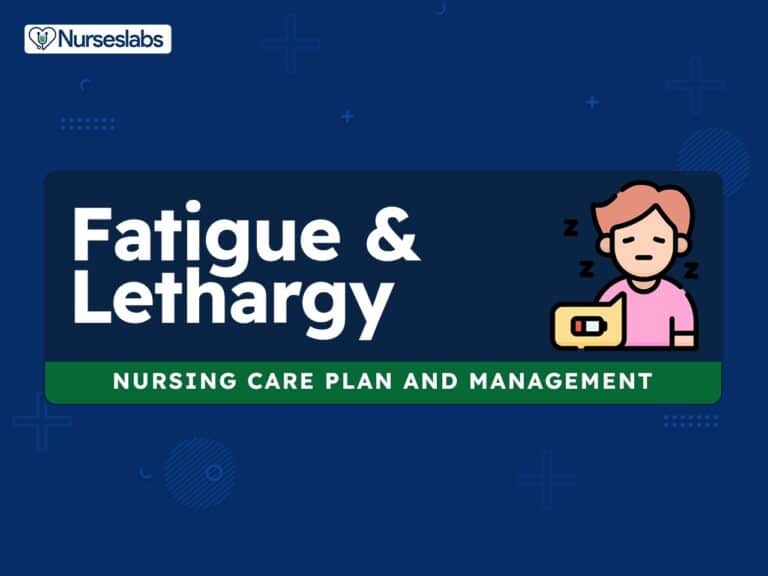
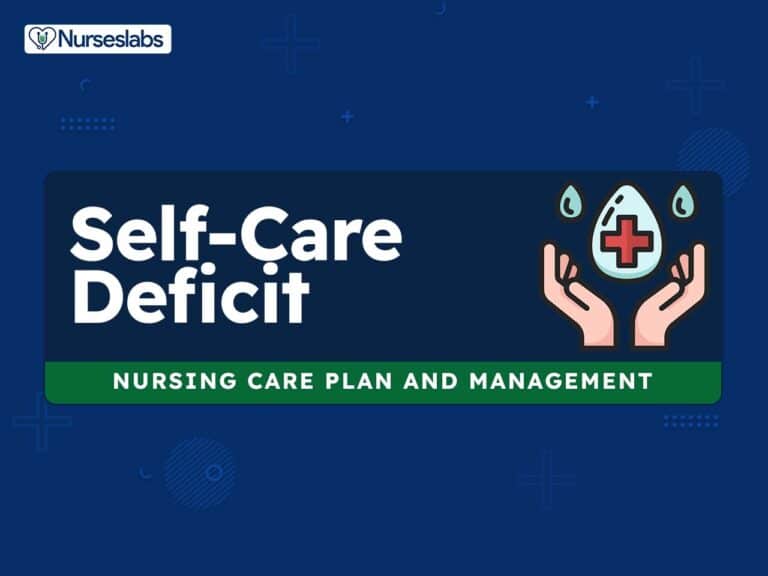




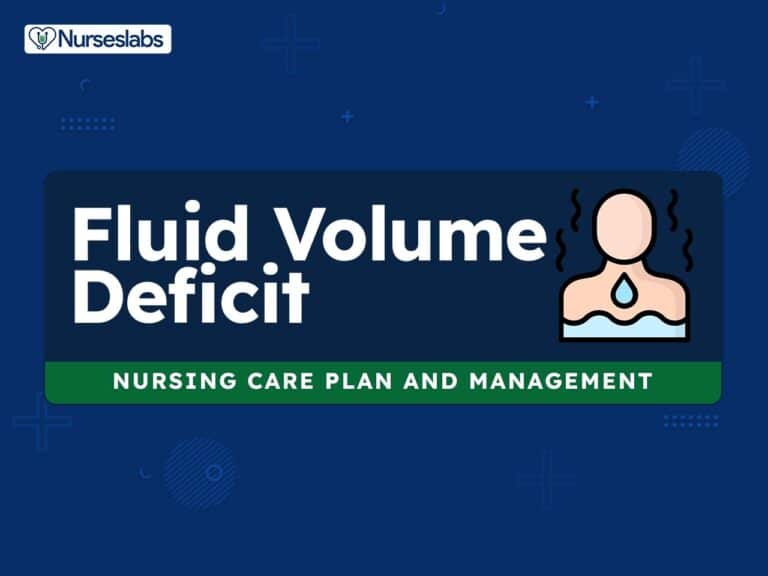
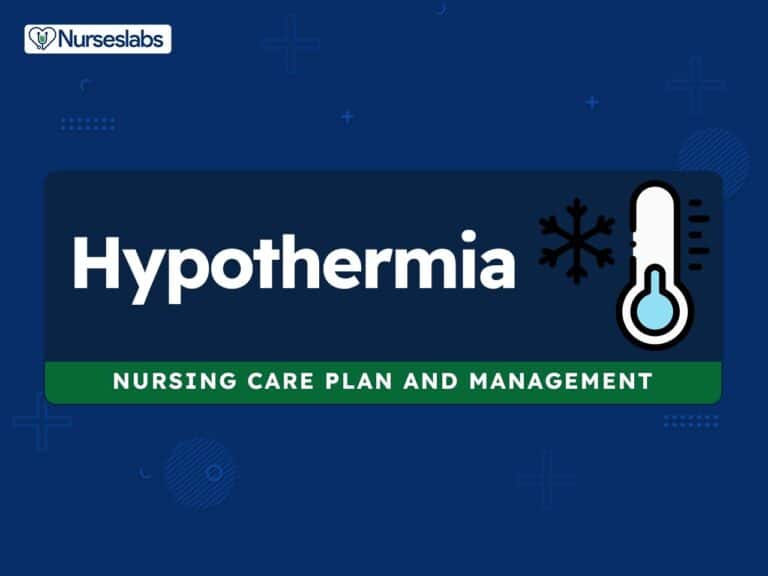
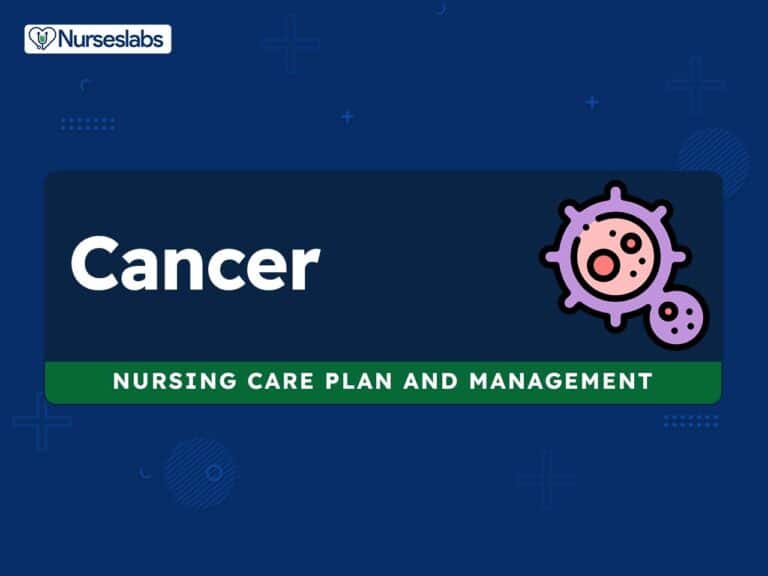



Leave a Comment